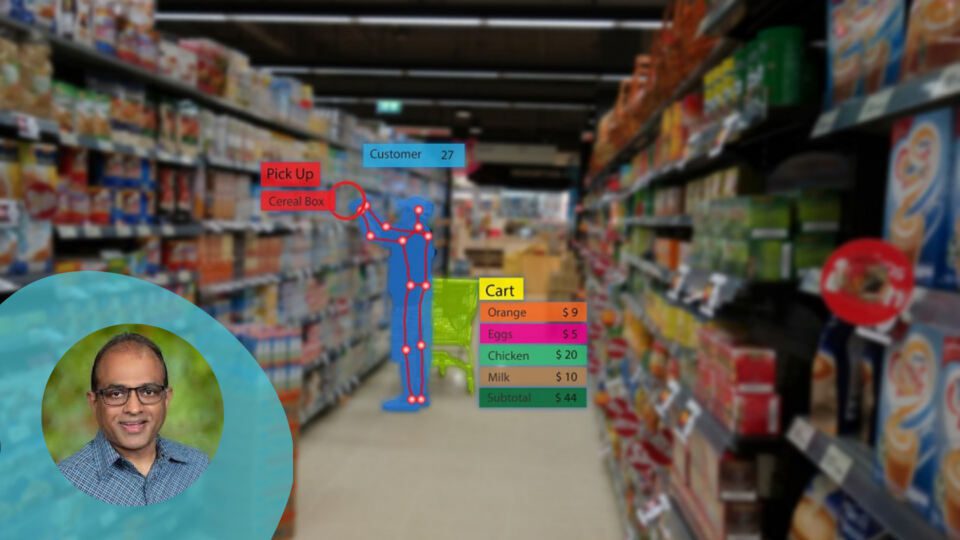Retail shop margins are already under significant stress due to online competition. Furthermore, a retailer’s bottom line might be harmed by a scarcity of inventory compared to the available records in the system, known as “shrink.” Shrinkage is the loss of inventory stock as a result of shoplifting, employee theft and other factors. It can occur on the sales floor, at checkout or even at the store exit.
Shrinkage numbers leave merchants vulnerable, since a higher amount of shrinkage means lesser profits. The National Retail Security Survey 2021 found shrinkage at an all-time high in 2021, accounting for 1.6% of a retailer’s bottom line.
Adding to that, in a post-COVID era, the desire to digitize the store and give more frictionless and contactless self-services — such as self-checkout alternatives – benefits both customers and retailers. However, with new advances comes the possibility of new channels for fraud.
A Closer Look at Shrinkage
The basic goal of loss prevention systems is to reduce shrinkage. Many innovations in sales-floor surveillance, including cameras, EAS alerts and RFID-enabled loss prevention have been made to keep a watch on products and personnel. However, these hinder retailers’ capacity to respond in real time.
Also, there has been an increase in employee theft, sometimes known as “sweethearting,” in which employees gift products to friends and family without billing them or billing products that are less expensive than the items being purchased. Many types of retail theft occur at checkout, depending on the cooperation of an outside shoplifter and a POS system employee.
And with self-checkout, the chance to steal has increased. Products don’t need to be hidden inside shoppers’ clothes or stuffed into a bag in the middle of a store aisle. They can be placed openly in a bag as customers transfer items across the scanner while they avoid scanning the most valuable items.
Reduce Checkout Fraud with Computer Vision and AI
As a result of these increasing challenges, retailers are investing in new technologies to combat retail shrink with better loss prevention solutions at the front of the store. There are new solutions available that use AI and computer vision to help retailers fight shrink, reduce theft and ultimately better manage their inventory. They also provide an added benefit of improving the customer experience by preventing unexpected stockouts that happen as a result of unexpected thefts.
Fraud at checkout, including at staffed registers and self-checkouts, necessitates the integration of data from item-level tracking with computer vision and POS. Comparing item-level counts to POS-generated counts can help associates discover fraud and take action in real time. AI and computer vision help retailers enhance checkout processes by making them smarter, which reduces theft and improves inventory control.
Here’s an example of how this may look: a solution could add a camera to existing checkout lanes and use AI to cross-check the number of items scanned, helping detect and prevent theft by shoppers. As a customer scans an item at the POS system, the camera sees the items being scanned. It generates the total item count and immediately sends the number to the integrated POS system. The video camera is tied to the POS system and once the items are scanned, the POS system tallies the total count with the camera-generated count.
If the two numbers don’t match, a system can be set up to generate a dashboard, POS alert or a mobile alert that’s sent to the staff in charge as notification for potential theft or erroneous billing. It enables the store associates to intervene or assist in transactions before they are processed, allowing the manager to manually process the transactions.
With computer vision and AI, retailers have the opportunity to rectify the situation without having to accuse customers of shoplifting. Store associates can let shoppers know about the system discrepancy and give them the chance to pay for the unscanned items. In the long run, the process will help in behavioral change, leading to lower shrinkage and cost savings.
In the National Retail Security Survey 2021, it was reported that retailers are proactively investing in technology to fight the rise in organized retail crime. Investing in a loss prevention solution that includes computer vision and AI doesn’t only help in saving revenue leakage, but also directly and positively impacts the customer experience. It’s a win-win for retailers and customers alike.
Rohan Sanil is CEO and Co-founder of Deep North. He has over two decades of product, business and entrepreneurial leadership in the video analytics space. He previously founded at Akiira Media Systems, Atstream Networks and Tri-Cad, where he was instrumental in raising capital and launching products. Prior to co-founding Deep North, he led product management at MetricStream and business development at Cambridge Solutions (now part of DXC Technology), building key partnerships with marquee customers such as Polycom, Broadcom, Virgin Mobile, Cisco and Oracle. Sanil holds an M.S. Degree in Management Science from the University of Dayton, Ohio, and a B.S in Mechanical Engineering from Karnataka University, India.




